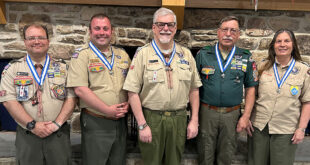Summary
High-adventure trips are intended to deliver wilderness and learning adventures that last a lifetime. Being both medically and physically prepared for these trips will help ensure they are as safe and enjoyable as they are memorable. While this is true for all Scouts, it is especially critical for adult leaders to be prepared!
General Information
- High-adventure trips are physically demanding and have inherent risks, and each crew member needs to understand how to mitigate these risks. Part of this process is ensuring that each crew member has identified any medical issues that may place either the crew member or the crew at an increased risk of a medical emergency while on the trip.
- The first step is to complete the three parts of the BSA Annual Health and Medical Record (AHMR). You must meet with a licensed health care provider (e.g., M.D., D.O., N.P., or P.A.) to complete Part C of the Record. Be sure you and your provider have read the “High-Adventure Risk Advisory” section of the AHMR so everyone fully understands the known health risks associated with the high adventure.
- Have an honest and open conversation with your provider about whether it is appropriate for you to go on the trip. The physical demands vary by high-adventure activity, but the presence of any of several medical risk factors can raise concerns. While the list is not all-inclusive, the following are important factors: excessive body weight, history of heart or cardiovascular diseases, high blood pressure, diabetes, seizures (epilepsy), asthma, allergies or anaphylaxis, ingrown toenails, recent musculoskeletal injuries, orthopedic surgery, and psychological or emotional difficulties.
- If it’s medically appropriate for you to go, the second step is to be sure you are physically fit enough to meet the challenges of high adventure. Being fit will greatly enhance your enjoyment of the trip! Most high-adventure trips require a combination of cardiorespiratory fitness, muscular endurance, and muscular strength. Can you walk three miles in an hour without stopping? Pass the BSA swim test? Do 10 push-ups? Go up three flights of stairs without your legs tiring? If not, then you would benefit from improving your fitness.
 ARCHIVE – New Birth of Freedom Council, BSA Website for the New Birth of Freedom Council, BSA
ARCHIVE – New Birth of Freedom Council, BSA Website for the New Birth of Freedom Council, BSA

